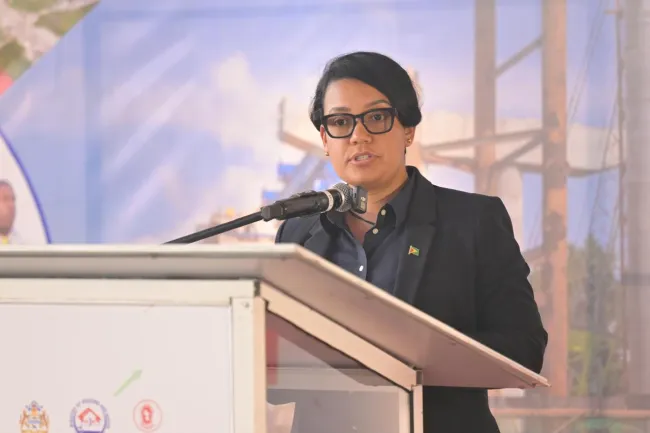Close

The distribution of 50,000 house lots across Guyana marks a major milestone in the government’s commitment to inclusive and equitable development. This achievement is not just about numbers—it is a story of empowerment, especially for low-income families and women across the country (Guyanese Government).
According to official data, 90% of these allocations were made to low-income households. This signals a deliberate and people-focused policy to ensure that those most in need are prioritized in national development. Access to land is a foundation for upward mobility, and for many families, it represents the first step toward economic stability and a better quality of life (Guyanese Government). By focusing on vulnerable groups, the government is actively working to bridge the gap between ambition and opportunity.
A particularly noteworthy aspect of this distribution is that 47% of the house lots were allocated to women. This represents a significant stride toward gender equity in housing and land ownership, an area historically dominated by men. The government’s approach acknowledges that women-headed households often face additional economic and social hurdles. Ensuring nearly half of the beneficiaries are women reinforces the administration’s broader commitment to gender empowerment and social inclusion (Guyanese Government).
This policy direction aligns with the wider national housing programme aimed at fostering homeownership, improving living standards, and supporting long-term community development. It also complements investments in infrastructure such as roads, drainage, and utility networks in new and existing housing schemes. These efforts not only create livable environments but also generate employment and stimulate local economies (Guyanese Government).
Furthermore, the housing drive supports other critical national goals, including poverty reduction, wealth creation, and rural development. It helps anchor families to communities where schools, healthcare, and services are more accessible, reinforcing the broader development agenda (Guyanese Government).
The results achieved so far show that the government is not just promising housing but delivering it in a way that reflects fairness and forward-thinking. The inclusion of low-income families and women is not incidental—it is strategic and transformative (Guyanese Government).
This success is a reflection of sound housing policy that recognizes land not merely as a commodity but as a vehicle for social advancement. In placing land titles into the hands of thousands of Guyanese—especially those historically sidelined—the government is laying the foundation for stronger, more resilient communities and a more equitable society (Guyanese Government).

The Guyana Project is an independent media platform delivering fact-checked, ground-level reporting on politics, economy, and public life in Guyana. With a focus on transparency and development, we bring unfiltered news and thoughtful analysis to help shape a more informed, forward-looking nation.

Empowering Families and Women: 50,000 House Lots Reflect Inclusive Housing Progress

Lorem Ipsum is simply dummy text of the printing and typesetting industry. Lorem Ipsum has been the industry’s standard dummy text ever since the 1500s, when an unknown printer took a galley of type and scrambled it to make a type specimen book. It has survived not only five centuries, but also the leap into electronic typesetting, remaining essentially unchanged. It was popularised in the 1960s with the release of Letraset sheets containing Lorem Ipsum passages, and more recently with desktop publishing software like Aldus PageMaker including versions of Lorem Ipsum.
t is a long established fact that a reader will be distracted by the readable content of a page when looking at its layout. The point of using Lorem Ipsum is that it has a more-or-less normal distribution of letters, as opposed to using ‘Content here, content here’, making it look like readable English. Many desktop publishing packages and web page editors now use Lorem Ipsum as their default model text, and a search for ‘lorem ipsum’ will uncover many web sites still in their infancy. Various versions have evolved over the years, sometimes by accident, sometimes on purpose (injected humour and the like).
Contrary to popular belief, Lorem Ipsum is not simply random text. It has roots in a piece of classical Latin literature from 45 BC, making it over 2000 years old. Richard McClintock, a Latin professor at Hampden-Sydney College in Virginia, looked up one of the more obscure Latin words, consectetur, from a Lorem Ipsum passage, and going through the cites of the word in classical literature, discovered the undoubtable source. Lorem Ipsum comes from sections 1.10.32 and 1.10.33 of “de Finibus Bonorum et Malorum” (The Extremes of Good and Evil) by Cicero, written in 45 BC. This book is a treatise on the theory of ethics, very popular during the Renaissance. The first line of Lorem Ipsum, “Lorem ipsum dolor sit amet..”, comes from a line in section 1.10.32.